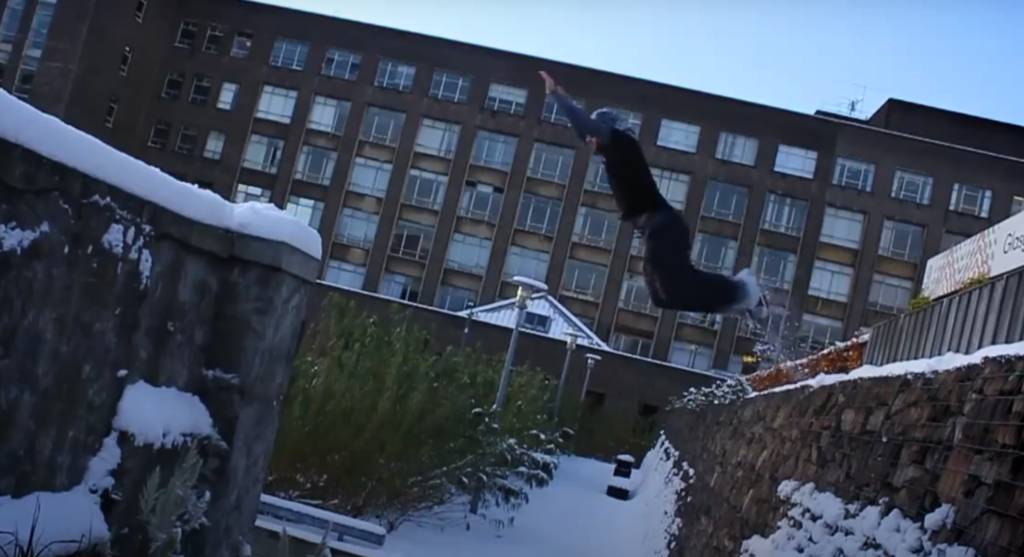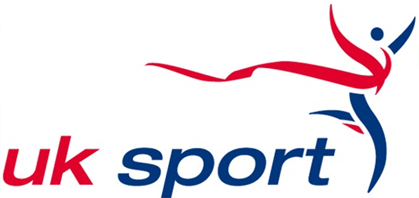
Training parkour in the winter, or in wet, rainy conditions in a safe and controlled manner is encouraged here at Parkour UK.
The UK is notorious for horrible weather during the winter. Lots of rain, heavy snowfall, and dark, cold evenings approaching quicker seem to be regular, but we strongly believe you should still practice parkour, whatever the weather!
Here are some examples of training in different weather conditions.
We also have information, advice, and guidance (IAG) on our website which details a little bit more regarding training outdoors.
Parkour/Freerunning is a sport that needs and requires the same dedication, discipline, and attention as any other sport.
Parkour encourages humility, respect for others and for one’s environment, self-expression, community spirit, and the importance of play, discovery, and safety at all times.
Our IAG outlines some important practices for parkour traceurs and practitioners to follow. We have also listed this below, but will highlight some of the key points for training in winter conditions, and build on them for some extra information.
Of course, it goes without saying. All of our recommendations are important, regardless of the weather or situation you are training in, but being able to adapt is a key skill of parkour, and some additional details need to be focused on.
It is recommended that practitioners:
When it is dark, cold, wet, or covered in snow, it is always crucial to select an appropriate training area. Some areas might be out of reach during these times, particularly in the snow. Whilst we do recommend trying to hit your regular training spots, please don’t put yourself at any risk trying to access these areas.
When heavy snow falls, individuals and businesses have to slightly adapt. Because of this, training in some highly populated areas might not be possible. Again, use your initiative and previous history at spots to gain an understanding of the wider picture.
Checking your surfaces should be done during any training session, regardless of the conditions you are training in. In parkour, our trust should come 100% in our abilities and what we are able to do. Leaving even the smallest bit of faith on an unchecked surface could result in injury. Go through the usual checks, the weather may have weakened some structures. Of course, if you’re training in the rain, check the surfaces you are landing on also. Adapt to the environment around you, understand your ability, and do not put yourself at unnecessary risk.

Building on the last point, appropriately assess the level of the movements being performed against your own skill level. Training in dark, wet, icy, or snowy conditions may not be the best time to see how far your running precision (A jump from one precise point to another) is.
Use this time to drill technique, practice landings, or explore different styles of movement. If you deem anything unsafe to try, listen to your body and mind. It isn’t worth risking injury for the sake of a movement.
No matter the weather, being a good ambassador for Parkour & Freerunning is always something to follow when out training. Members of the public might be confused as to why you’re training during these conditions. Take the time to engage with members of the public, explain what it is you’re doing, and the benefit it has on you, and leave every conversation and interaction better than how it started.
Undercover Spots: If you’re lucky, your local training area may have some undercover spots that are sheltered from the worst of the weather conditions. This does not mean it will always be perfect. Some of these spots might be damp or icy still, so all of the points above still remain. Try mixing it up a little bit. Have the undercover spot as part of your training day, rather than the sole focus.
Indoor Facilities: There are a number of parkour gyms open across the UK that run open jam sessions throughout the winter. These indoor facilities can be used to practice some techniques and movements in a safe environment. You can check out a list of member organisations and gyms here.




